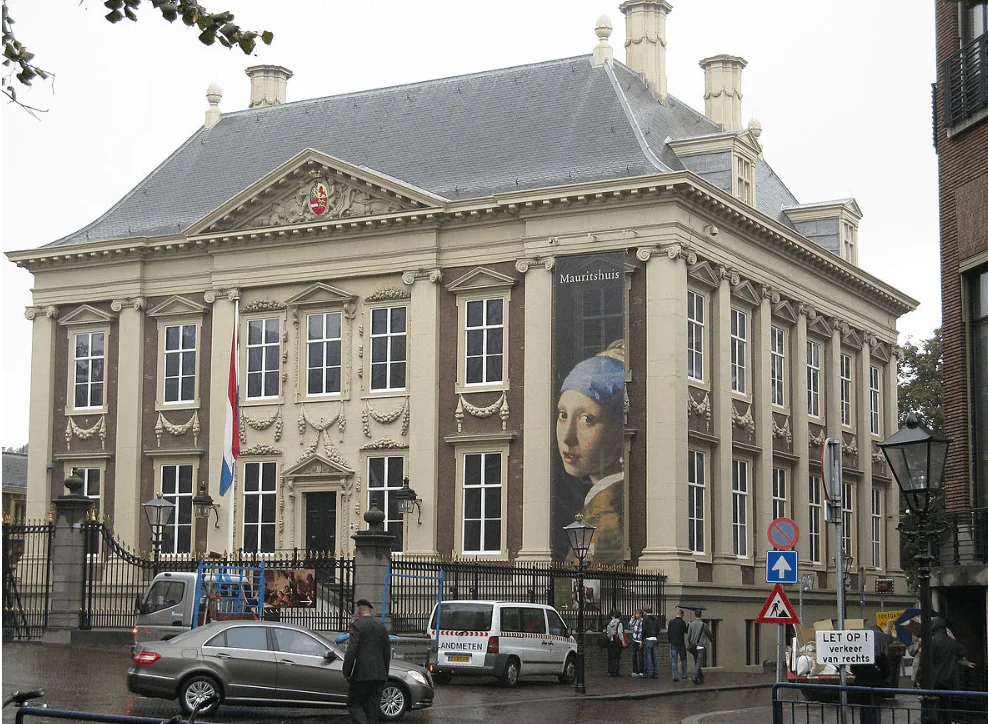It’s one of the most popular paintings by one of the most famous Dutch painters of all time.
In this post, you’ll discover the ultimate list of facts about View of Delft by Johannes Vermeer.
1. It’s one of his larger paintings
Johannes Vermeer was known to be a very meticulous painter who worked very slowly. This resulted in the fact that he only created a few paintings every year.
His eye for detail, especially when it comes to lighting, is virtually unmatched, so enormous paintings can’t be found in his oeuvre. A View of Delft by Johannes Vermeer has dimensions of 96.5 × 115.7 centimeters (38.0 × 45.6 inches), which makes it one of his larger paintings.
To give some reference, his largest painting is called “The Art of Painting” and has dimensions of 120 × 100 centimeters (47 × 39 inches), which is just slightly larger than this one.

2. It depicts his hometown from across a river
Delft was the hometown of Vermeer and the painting depicts the view over this city in the 17th century. One of the most remarkable facts about View of Delft by Johannes Vermeer is that it was painted in a period when cityscapes were not that popular.
If you look at just about all of his other paintings, they usually depict domestic scenes or so-called “tronies,” faces of people such as his most famous painting “Girl with a Pearl Earring.”
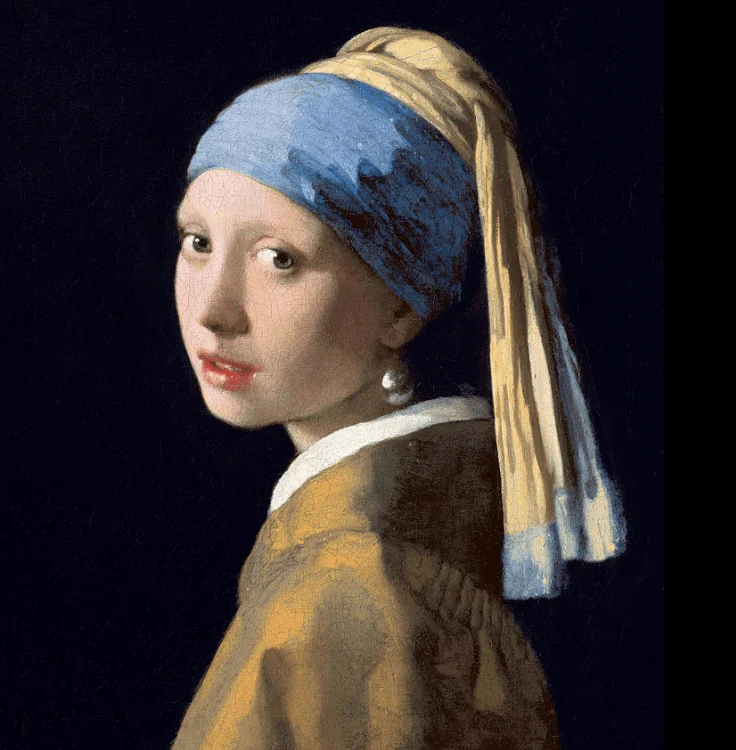
3. It was painted from an elevated position
The painting was created from an elevated area, looking down on the quayside of the River Schie. This means that he probably set up his easel on the second floor of a building located in this area.
Apart from the prominent churches, not many buildings in the foreground still stand as you can see from a picture taken in about the same location that the people on the quay are walking in the painting.

4. It’s 1 of his 3 paintings of Delft

Another one of those remarkable facts about View of Delft by Johannes Vermeer is that it’s only 1 of 3 paintings of his hometown that he ever created!
The second one is called “The Little Street” and is now located in the Rijksmuseum in Amsterdam, while the third is called “House Standing in Delft,” but has been lost through the centuries.
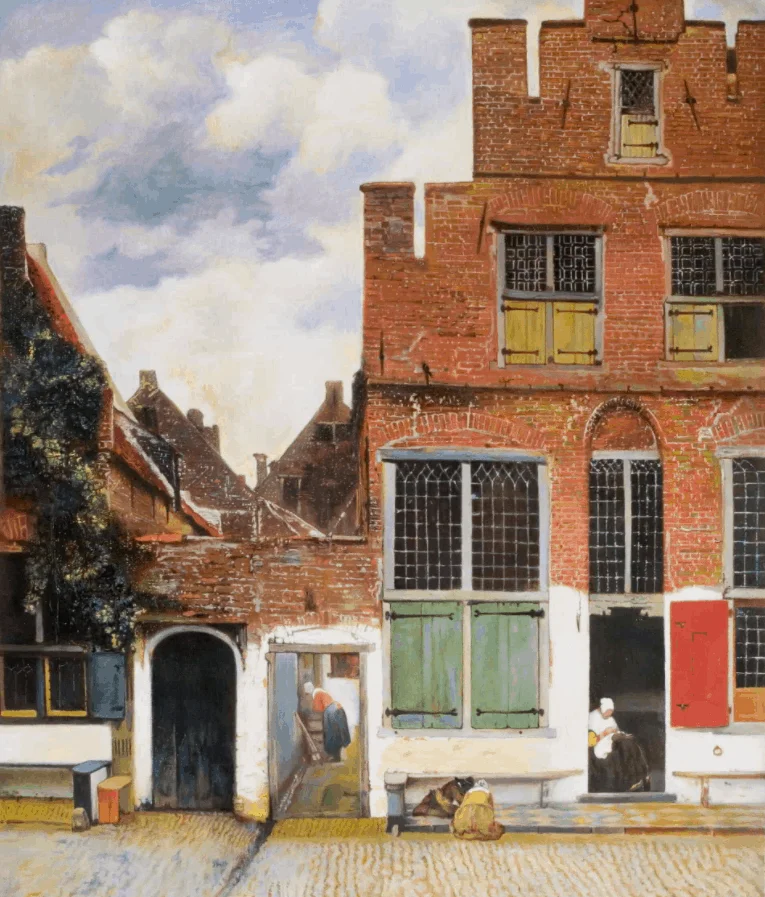
5. It depicts a scene in the morning
It’s uncertain when exactly the painting was created. Most historians agree that it was painted between 1659 and 1660 and that it was painted after “The Little Street” because of his use of pointillism in the work.
What is certain is that it depicts a scene in the morning, mainly because we can see that the lighting reflects from the southeast, considering that the view is facing towards the north.
What makes this clear is the reflection of the light on the buildings on the right side of the painting.

6. One element in the painting gives away an approximate date
So how can we be so sure that the painting was created between 1959 and 1660?
One of the main reasons is the absence of the bells in the belfry of the Protestant “Nieuwe Kerk” (“New Church”). These bells were placed in the year 1660, so this suggests that the painting was created before this construction.
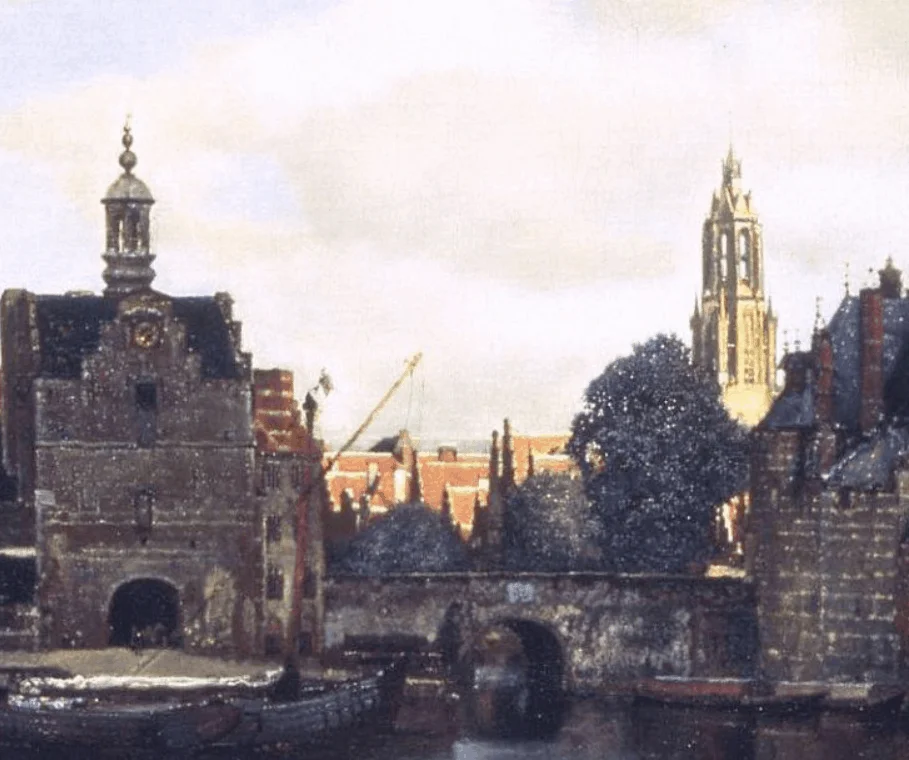
7. Did researchers from Texas State University uncover the mystery?
In July 2020, researchers from Texas State University conducted thorough research on the painting to discover the exact date it was created.
Armed with Google Earth and astronomical information from the 17ty century, they traveled to Delft and studied the exact location where the painting was created.
They found out that the only astronomical possibility of the lighting, in combination with the leaves on the trees, was September 3, 1659 (or an earlier year).
They also discovered that the time on the hand of a clock of one of the buildings in the painting suggests a time near 8 a.m, which is consistent with what historians have always assumed.
This pretty much solves the mystery!

8. The church where William the Silent was buried is in the painting
One of the most famous people in Dutch history is referred to as “William the Silent,” but in the Netherlands, this man is best known as “Willem van Oranje” (Willem of Orange).
He was the main figure in the revolt against the Spanish which started the 80 years’ War, a period that would eventually lead to the so-called Dutch Golden Age.
Willem of Orange is buried in the “Nieuwe Kerk” (“New Church”) which is depicted right in the center of the painting.
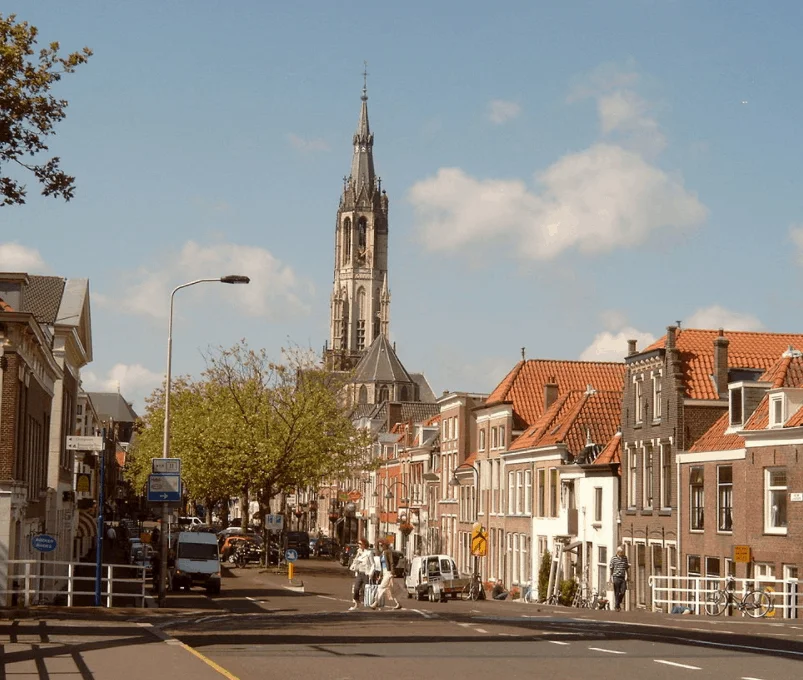
9. It also depicts a church with a crooked tower
Less prominent is a church that is even older than the Nieuwe Kerk, fittingly referred to as the “Oude Kerk (“Old Church”). This church’s tower can be found on the left side of the painting, behind the tower of a now-demolished building.
What’s remarkable about this church is the fact that its tower leans about 2 meters from the vertical, but isn’t visible enough in the painting to be clear.
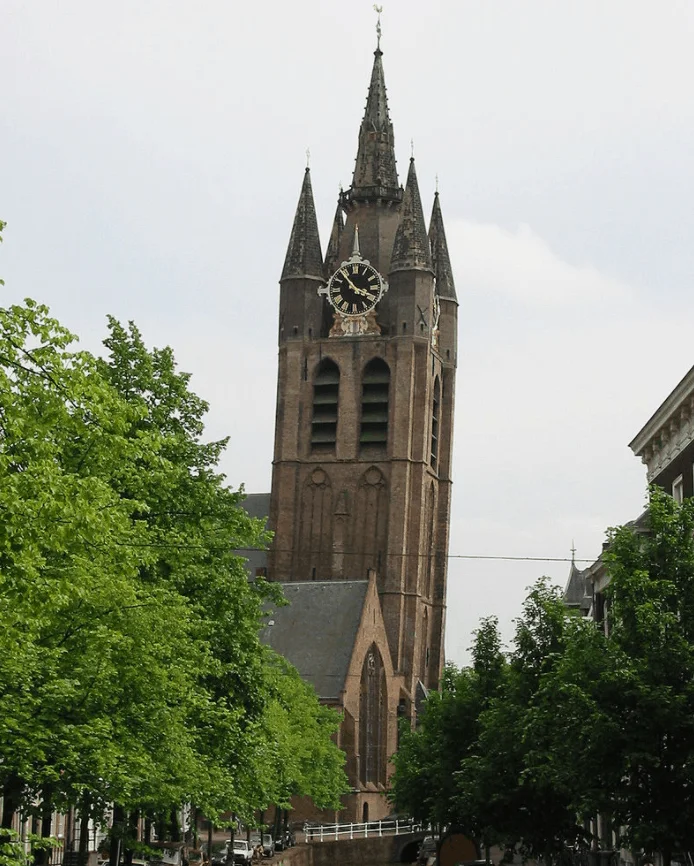
10. It’s possible that Vermeer used an optical device to paint View Of Delft
It has been suggested by many art historians that Johannes Vermeer used a visual aid such as a camera obscura to paint the domestic scenes.
To capture the details of View of Delft, it’s likely that he used a similar device or even a telescope.
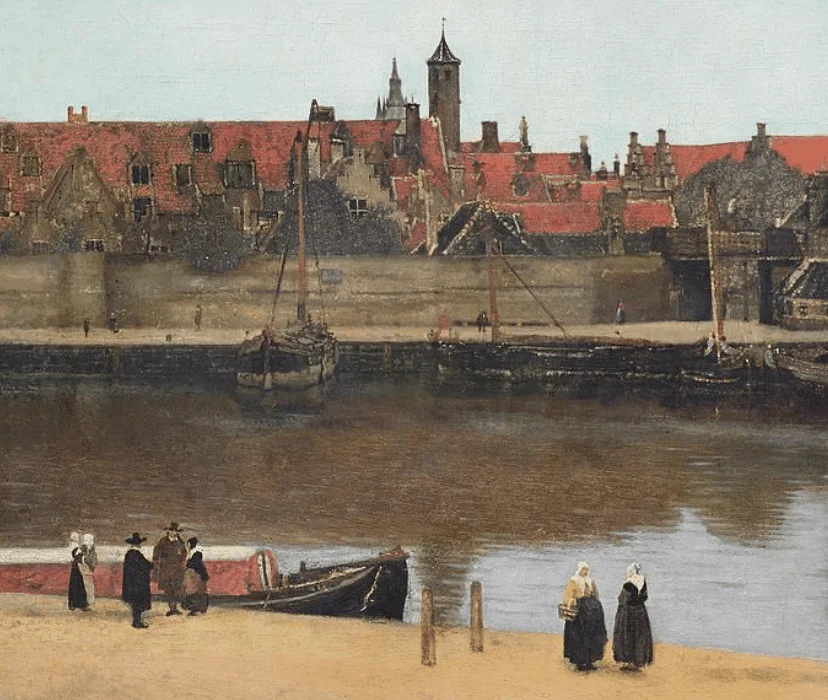
11. His painting technique is what makes this a masterpiece
One of the most fascinating facts about View of Delft by Vermeer is that he didn’t use an extensive variety of pigments for this painting. He mainly used calcite, lead white, yellow ochre, natural ultramarine, and madder lake.
What makes this such a masterpiece is his meticulous eye for detail when painting. Research has shown that he even mixed some grains of salt to create a certain texture to match the real scene.
12. The painting is located at the Mauritshuis in The Hague
So where can you admire View of Delft?
Little is known about the painting after Johannes Vermeer passed away but it’s assumed that it was in the collection of Jacob Dissius. It was auctioned in 1822 and sold for 2,900 guilders to the Dutch Royal Cabinet of Paintings, which was established at the Mauritshuis in The Hague.
Up until today, the painting has been in the collection of this museum!
